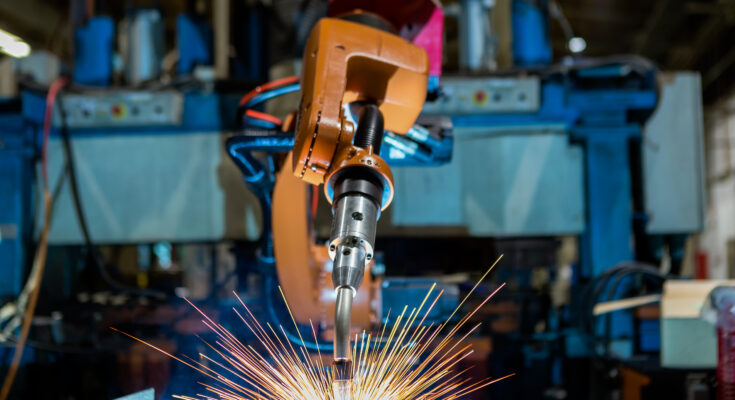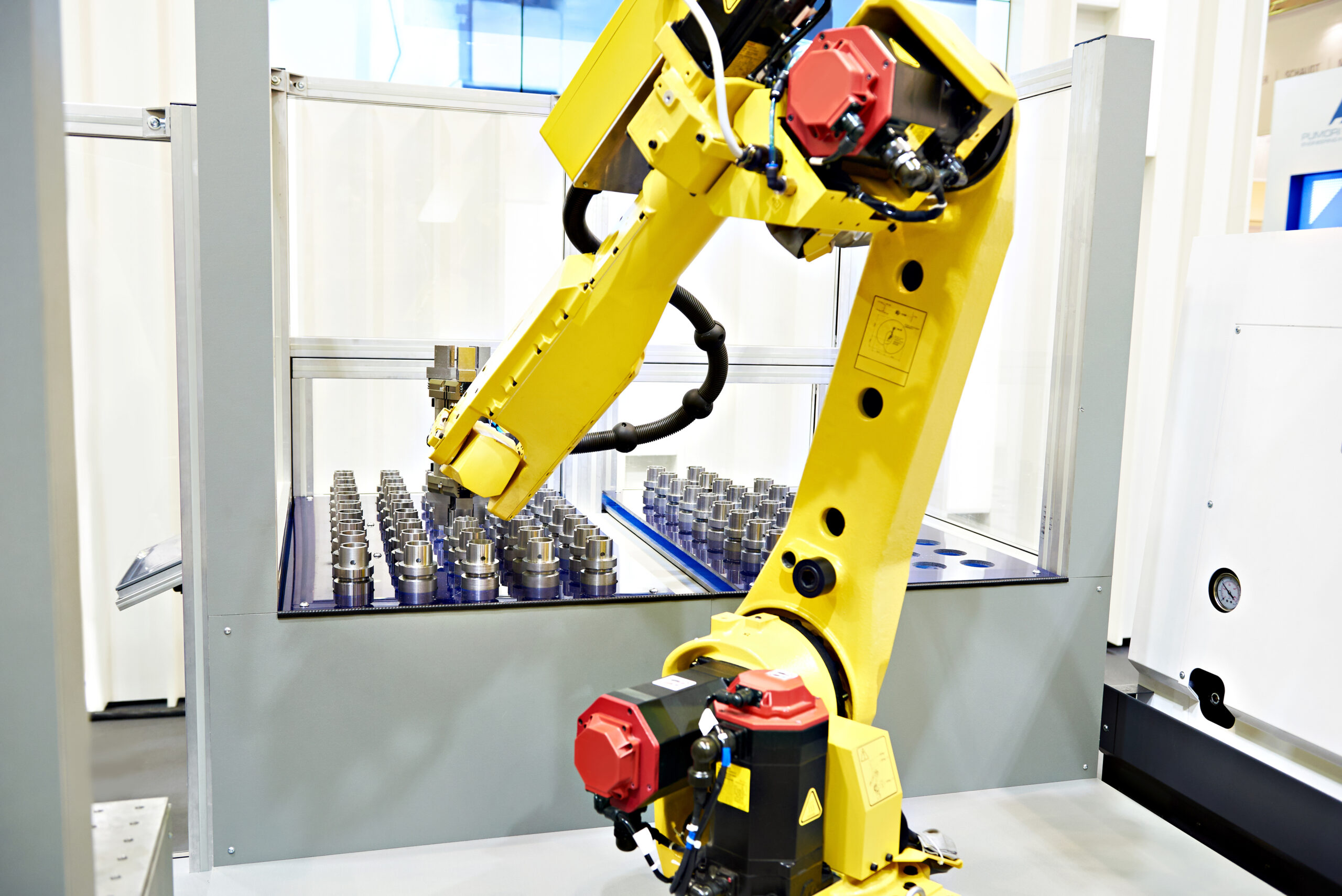Perhaps your welding robot has been up and running for a while… and it has been going well!
The robot has helped you to improve the consistency of your welding operations, reduced the time that welding technicians spend on routine tasks, and improved your productivity.
But, you want to improve the robot’s operation even more.
Is it possible to make a welding robot more efficient? More productive? More consistent?
The simple answer is: Yes!
There are many ways you can update your welding robot to continue to improve its operation throughout its life.
How to Achieve Continuous Improvement With a Welding Robot
When people first start using robotic automation, they are usually looking for a “quick win.” They want to deploy an application that will give a rapid Return on Investment and will make a clear difference to their business.
This might have been what you were looking for when you first began using robotic welding.
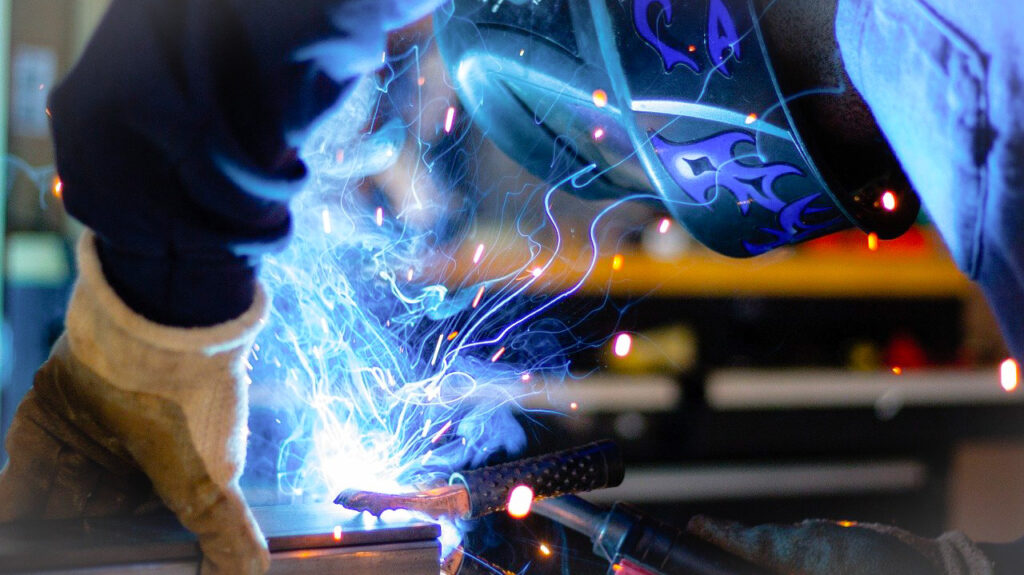
But, some people make the mistake of stopping after their welding application is operational. The robot has already “showed its worth” so they don’t feel the need to improve its operation too much.
But, they are missing out.
As with any manufacturing process, it is a good idea to practice continuous improvement with your robot cells. Always be looking for ways to make the robot’s operation slightly better.
Robots are very adaptable so it is comparatively easy to tweak their performance without impacting too much on their productivity. For example, you can make changes to the robot’s programming offline and then upload those changes to the robot only when they are ready.
10 Tricks to Achieve the Best Results with Robotic Welding
There are dozens of tricks you can apply to improve your robot welding cell.
Here are 10 effective improvements that you might want to consider:
1. Automated Nozzle Cleaning
One problem with welding is that it can be a messy process. Although the welding operation itself is already automated, people might still need to clean the torch to avoid the buildup of material.
For this reason, some welding experts recommend adding an automated nozzle cleaner to your setup as a first improvement. This reduces the amount of human contact needed and improves productivity.
2. Cable Management
Some of the improvements you can make will help you to reduce the required maintenance and repairs to the robot welding cell. One way to do this is to ensure that your cable management is up to scratch.
If your robot’s cables are the wrong length (too long or too short) or have been incorrectly routed along the robot’s arm, this can cause damage to them over time.
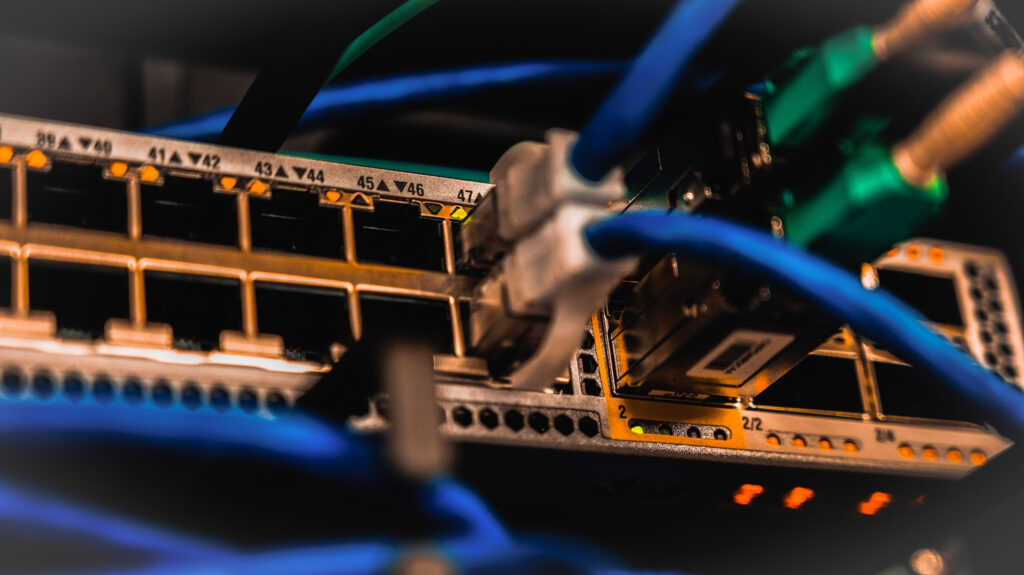
3. Efficient Gas Management
Gas is an essential part of many robotic welding cells. It is also an area where you can make some small-but-significant improvements to your welding efficiency.
There are now various options for monitoring and automating welding gas management. These can ensure that only the right amount of gas is being used at any given time.
4. Tracking and Data Analysis
Big data is becoming a game-changer in modern manufacturing. There are now more ways than ever to track, analyze, and use the data about your welding robot to continuously improve its operation.
There are many aspects of your robot cell that you could track, all the way from power and wire consumption to the distance traveled by the robot. The most important thing is that you actually use this data to make improvements to your cell.
5. Robotics Training
Your welding technicians and other people will be much better placed to help you improve your welding robot if they have undergone some robotics training.
There are various ways that robotics can help to reduce training time for welding, some of which we listed in our previous article.
6. Wire and Other Consumable Choices
As well as gas, which we have already mentioned, there are a few consumables in welding, including wire and contact tips. You can improve your cell’s operation by choosing the right consumables.
One important consideration with robotic welding is that the robot will keep the welder active for longer than a human would. As a result, it may burn through consumables much faster. You should choose consumables that allow you to optimize this.
7. Wire Feeding
A related improvement is how you use your wire. In particular, the rate at which you feed the wire through the welder will affect the quality of the weld and the amount of buildup on the tip, which will affect the amount of cleaning required.
Over time, you can gradually optimize the wire usage in your robot welding cell more accurately than you could with a human welder.
8. Improved Cell Inputs
Unlike human welders, robots can’t adapt to unexpected changes. If a part arrives at the robot and it is not prepared exactly the right way, the robot will either perform a bad weld or will not be able to operate at all.
You can improve the operation of the welding robot by optimizing the input to the cell.
9. Quick Change Automation
The more time that the robot is actively welding parts, the better its productivity. You can thus further increase your robot’s productivity by reducing the time it takes to move a new workpiece in front of the robot.
One way to move parts in front of the robot quickly is to use an external axis or workpiece positioner, as we discussed in a previous article.
10. Optimized Programming for Downtime
Many of the above improvements are associated with the hardware of robotic welding. However, you can make huge incremental improvements by choosing the right programming system.
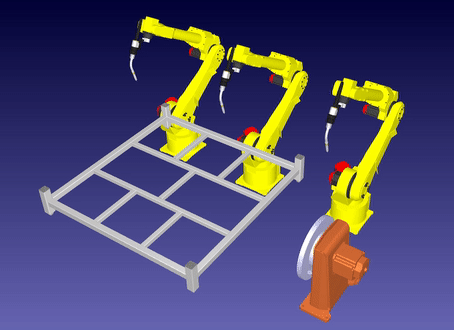
To make any change to your robot cell, the robot will need to be non-operational at the time you make the changes. This downtime is sometimes the reason that people choose not to improve their welding robot even when there are improvements that they can make.
But, with offline programming, you can significantly reduce the downtime that happens when you make changes.
There really is no reason not to continuously improve your welding robot.
What aspects of your welding robot would you like to improve? Tell us in the comments below or join the discussion on LinkedIn, Twitter, Facebook, Instagram, or in the RoboDK Forum.

